Helping You Visualize Your World
Kitware develops custom software to help solve high-performance computing and visualization challenges. Built on our open source platforms, our solutions are cost-effective, easy to use, and fully customizable. We look forward to connecting with the HPC community to share the latest advancements in our platforms including, CMake, ParaView, and VTK.
If you are attending SC22, visit us at booth 1822 for live presentations, demos, and to talk with our developers about our open source platforms. You can also learn about what it’s like to work with Kitware through our customization, training, and technical support services. For those who are unable to attend in person, please explore this conference page for helpful resources or contact our team for more information.
Register For Our Training Courses
Kitware is offering training courses for our popular open source platforms. Supercomputing attendees can take advantage of our 30% discount using the codes below.
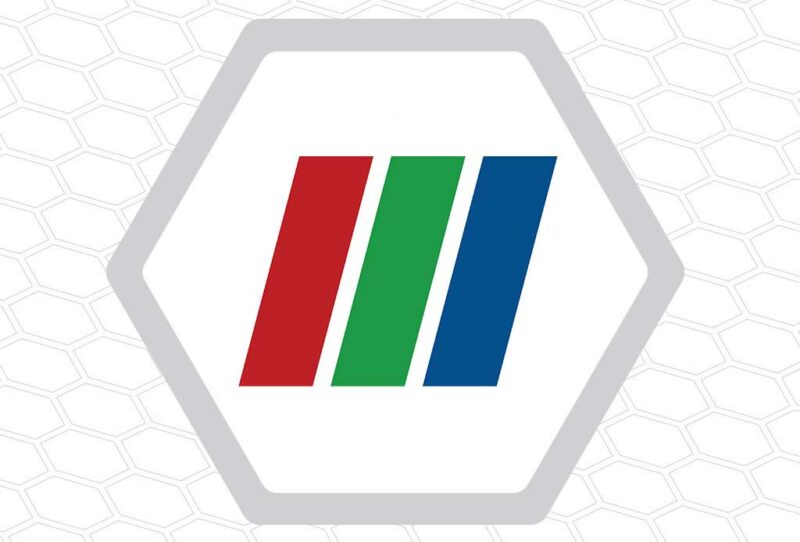
ParaView Developer’s Course
This course will allow you to look “under the hood” of the ParaView application and provide you with a detailed understanding of ParaView’s framework as well as how to customize it in order to better suit your visualization needs.
Date: December 6-7, 2022 – 12pm to 4:30pm EST
Duration: 8 hours over 2 afternoons (1-5pm)
Location: Remote
Discount Code: SC22PARAVIEWDEVELOPERS
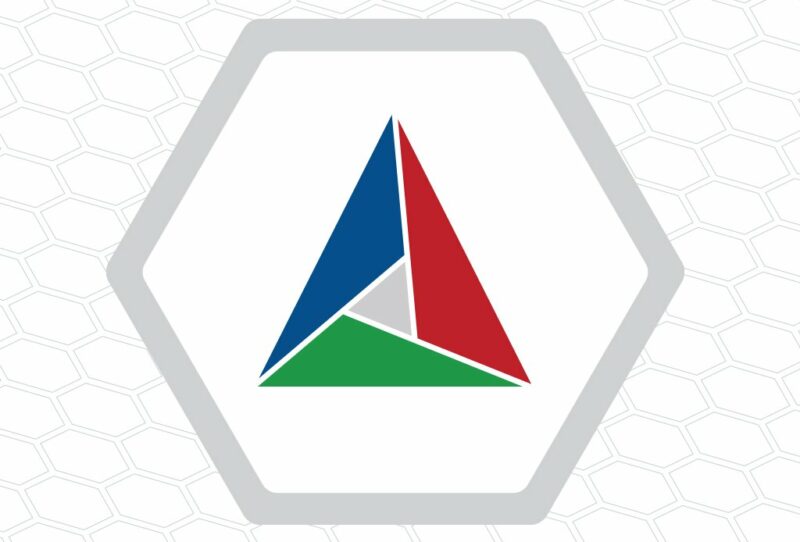
CMake Training
This CMake training covers how to efficiently write CMake scripts for small to larger projects along with best practices.
Date: January 9-11, 2023 – 1pm to 5pm EST
Duration: 12h over 3 afternoons (1-5pm)
Location: Remote
Discount Code: SC22CMAKETRAINING

ParaView User Training
This course provides an overview of ParaView, including how to visualize and process data. The examples are based on use cases from several scientific domains.
Date: February 22-23, 2023 – 1pm to 5pm EST
Duration: 8 hours over 2 afternoons (1-5pm)
Location: Remote
Discount Code: SC22PARAVIEWTRAINING
Kitware’s Open Source Supercomputing Platforms


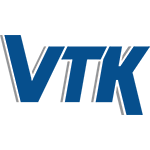



Effectively leverage these platforms with Kitware’s professional support services.
Events
Trame is a Python framework that lets you bind beautiful Web UI to your workflow and target many deployments. Thanks to trame, your application can be used as a service in the cloud or as a standalone executable, or as an interactive cell within Jupyter without any code change. Trame also runs on HPC with ParaView while being accessible to your phone. Trame is the solution for your next In-situ visualization or computational steering.
Check out the new and improved Visualization Toolkit (VTK). Better performance, better rendering capabilities, and better UI support. The latest release of VTK brings it all!
Computational Model Builder (CMB) is an open source framework for specifying simulations and managing end to end workflows for computational science. It provides extensible user interface elements to orchestrate workflow tasks such as input file generation, modeling, meshing, and HPC job submission. Come see all the new science enabled by CMB.
Learn the latest developments and features CMake has to offer.
What’s New in ParaView
Presented by: Sébastien Jourdain
Come see highlights of what’s new in the latest release of ParaView.
Catalyst is the in-situ solution for ParaView. It helps to reduce your simulation I/O tasks by performing on-the-fly analysis of the simulation output directly from memory. Catalyst 2 has a minimal and stable interface to minimize the footprint in your simulation code. You can create your analysis pipeline interactively in ParaView thanks to the python scripting capabilities, without modifying your simulation code. Additional features are live visualization of your data and simulation steering, all within a pleasant UI/UX environment!
ParaView Async
Presented by: Christos Tsolakis, Ph.D. and Jaswant Panchumarti
In this presentation we explore how common ParaView workflows can become more interactive (and fun!) by revisiting the way we approach pipelines. We experiment with interrupting long processing filters and allowing modification of their parameters on the fly in a responsive UI. Get a glimpse of what future ParaView-based applications may look like.
Scientific Computing at Kitware
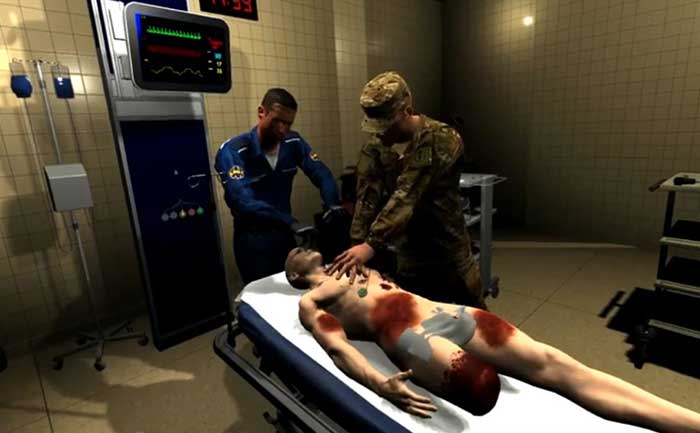
Computational Physiological Modeling
Our open source Pulse Physiology Suite features a well-validated and documented computational physiology engine for real time simulations of the body’s response to trauma, disease, and treatment. Pulse Physiology Explorer is an extendable user interface for quick exploration and experimentation with the Pulse Physiology Engine.
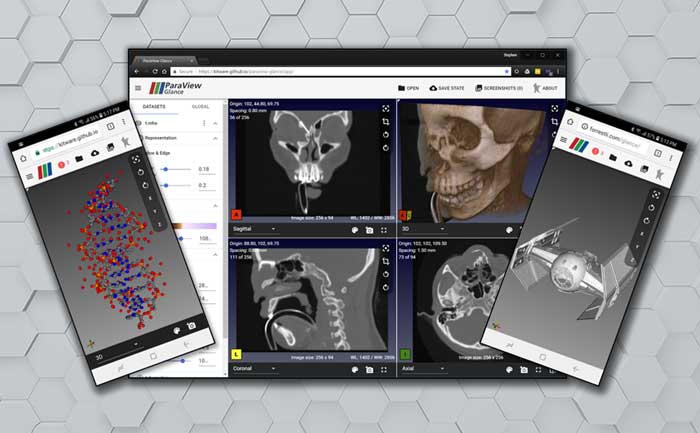
Cross-platform Interactive Applications
We work on a variety of cross- and multi-platform applications from desktop, to server, to mobile, to cloud, to web. The focus of these applications includes distributed 2D and 3D ultrasound, augmented reality, manual and semi-automatic segmentation and registration, quality control workflows, and surgical robotics. At their core, these applications are built on our technologies and expertise in image processing, segmentation, registration, and surgical guidance. We work directly with customers to design workflows, user experiences, and custom interfaces from the ground up. Our development, testing, and documentation practices are aligned with FDA requirements and HIPAA technical safeguards for software products.
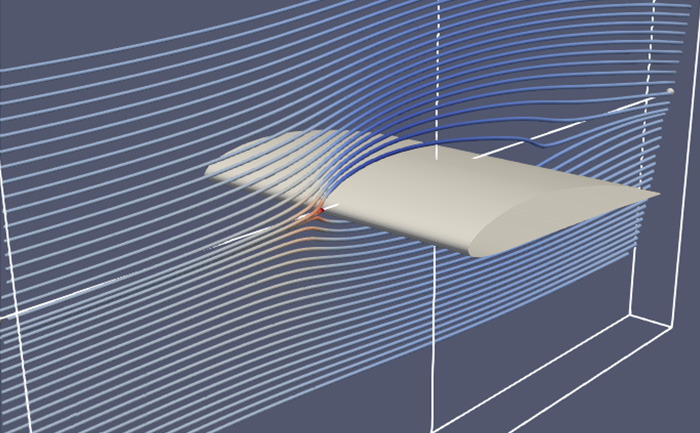
End-to-end Simulation workflows
We have expertise developing tools that address the simulation workflow from defining the proper geometric shape or mesh, to integrating simulation parameters, to queuing the simulation job, to visualizing and analyzing the simulation results. This approach to simulation workflow management breaks down the monolithic approach to HPC and simulation. Our approach is much more modular, and it can be easily tailored to specific simulations from hydrological to nuclear reactor simulations.
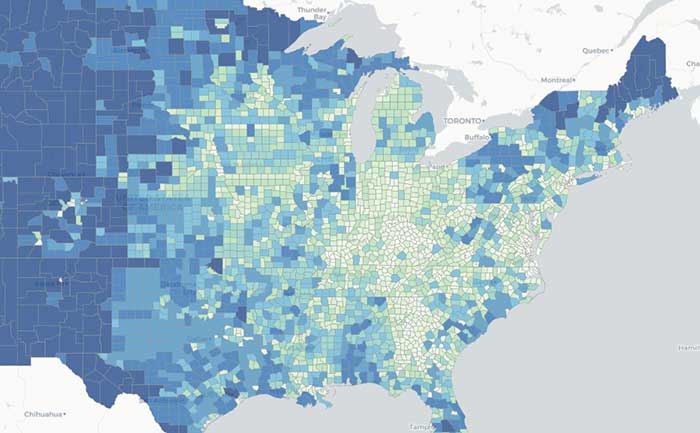
Geospatial Information Systems and Visualization
We offer advanced capabilities for geospatial analysis and visualization. We support a range of use cases from analyzing geolocated Twitter traffic, to processing and viewing complex climate models, to working with large satellite imagery datasets. We build AI systems for cloud-native geospatial data analytics at scale and then construct customized web-based interfaces to intuitively visualize and interact with these results. Our open source tools and expert staff provide full application solutions, linking raw datasets and geospatial analyses to custom web visualizations.
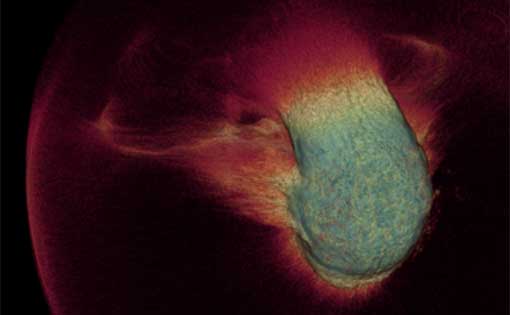
High Performance I/O and Scientific Workflows
We have expertise in developing and deploying high performance input/output (I/O) capabilities. I/O is one of the most pressing challenges with large-scale simulations and can be a major bottleneck when not done properly. I/O bottlenecks can often result in scientists discarding or not analyzing large amounts of their data. Kitware is one of the major partners of the Adaptable I/O Systems (ADIOS) framework used to address this challenge. The ADIOS framework delivers a highly optimized I/O and coupling infrastructure that enables efficient data exchanges to move data to the storage system and between multiple codes running concurrently through in situ and in transit processing. At its core, ADIOS is an I/O library built on a self-describing data mode and utilizes a publish subscribe mechanism. It is used to efficiently read and write large amounts of data to and from storage systems as well as to and from other codes. Together with our visualization infrastructure, VTK and ParaView, it enables efficient data analysis, visualization, code coupling and checkpoint/restart generation.
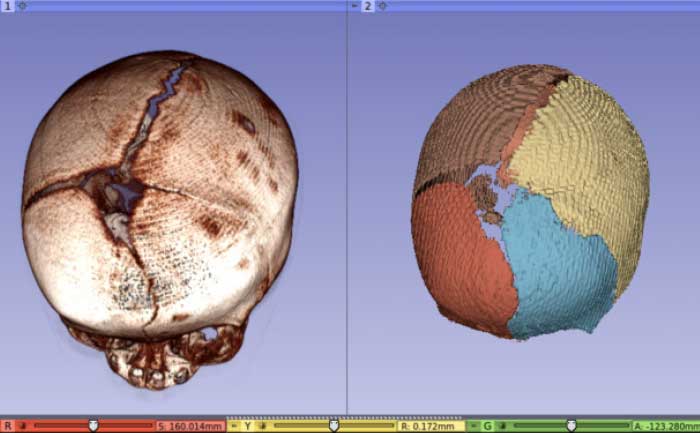
Image Guided Intervention and Surgical Planning
We develop image-guided intervention and surgical planning applications that replace traditional surgery and invasive procedures with minimally invasive techniques that incorporate medical imaging to guide the intervention. Patients prefer these procedures to open surgeries because they are typically less traumatic to the body and result in faster recovery times. Technological advancements in medical imaging, registration algorithms, visualization technologies, and tracking systems are driving forces behind increased adoption of these procedures by physicians. Software is an integral part of these image-guided intervention systems. Whether it is for interfacing with a tracking device to collect position information from surgical instruments, integrating intraoperative and pre operative images, or generating a 3D visualization to provide visual feedback to the clinician, software has a critical role. The software platforms we are developing at Kitware are playing a major role in increasing the pace of research and discovery in image-guided intervention systems by promoting collaborations between clinicians, biomedical engineers, and software developers across the globe.
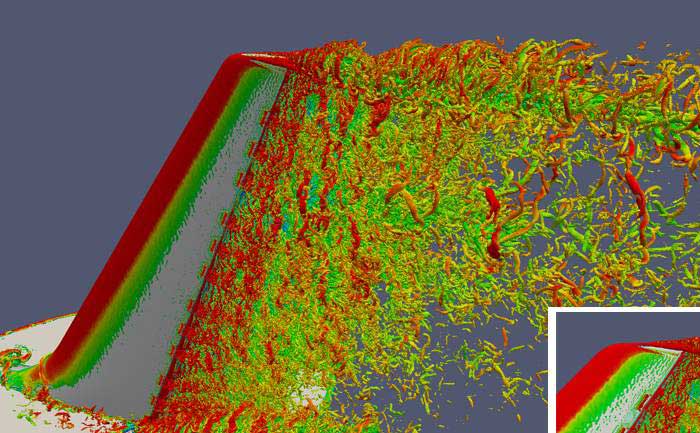
In-Situ Computing
Input/output (I/O) is one of the most pressing challenges with large-scale simulations. It is already common for simulations to discard most of what they compute in order to minimize time spent on I/O. As scientific computing moves to the exascale, the disparity between computational capability and I/O capability continues to expand. Since storing data is no longer viable for many simulation applications, data analysis and visualization must now be performed in situ. ParaView Catalyst is a light-weight version of the ParaView server library that is designed to be directly embedded into parallel simulation codes to perform in situ analysis and visualization at runtime. ParaView Catalyst was used with SENSEI in the largest-to-date in situ simulation run. The run was the first known to exceed the milestone of one million Message Passing Interface (MPI) processes.
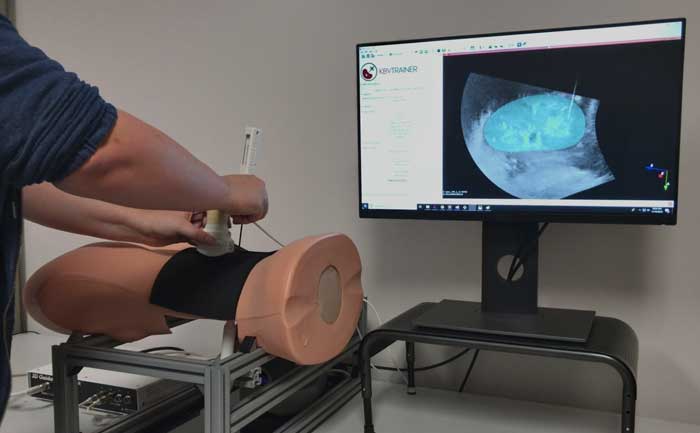
Virtual Simulation in Healthcare
Our experience with developing medical skill and procedural trainers includes developing the underlying real-time technologies such as fast numerical solvers, haptic rendering algorithms, advanced rendering for 2D and virtual reality displays, collision processing and custom hardware interfacing. These technologies are embedded in our Interactive Medical Simulation Toolkit (iMSTK) which is a C++ based open-source toolkit that aids rapid prototyping of interactive multi-modal surgical simulations. iMSTK features a highly modular and easy to use framework with a comprehensive ecosystem of tools and algorithms required to develop end-to-end medical planners and trainers. Besides access to the technologies that are exclusive to iMSTK, applications can benefit greatly from its interfacing with Kitware’s other open-source software tools such as VTK, 3D Slicer and Pulse. Such synergistic use of disparate software has broadened the range of medical applications that are possible and has already helped Kitware successfully build virtual trainers for laparoscopic camera navigation, kidney biopsy and osteotomy procedures.
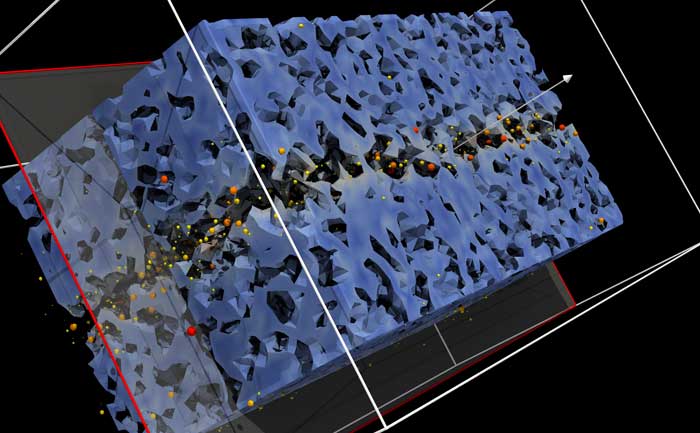
Visualization and Analysis
Data analysis is often the most critical bottleneck in the scientific discovery process. The exponential growth of datasets in size, scale, complexity, and richness makes it difficult for researchers and scientists to analyze data and obtain insight. As data approaches exascale, this problem becomes even more pressing. Moreover, data is becoming increasingly complex, not only because of enhanced resolution but because of the integration of experimental observations and associated metadata within datasets. We address these large data analysis issues by providing expertise in high-performance computing, distributed visualization, and data processing. We develop the computational infrastructure and tools to power large data analysis and visualization, in particular VTK and ParaView. These tools enable scientists to tackle today’s most pressing research challenges.
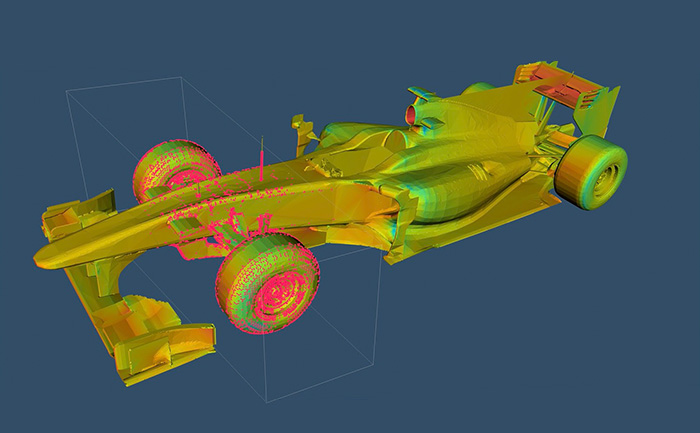
Web Visualization
We extend our heritage as leaders in scientific visualization with the Visualization Toolkit (VTK) through new visualization solutions for use in general data exploration and understanding. Our web visualizations bring together the best in modern visual analysis, lighting up data in new ways.
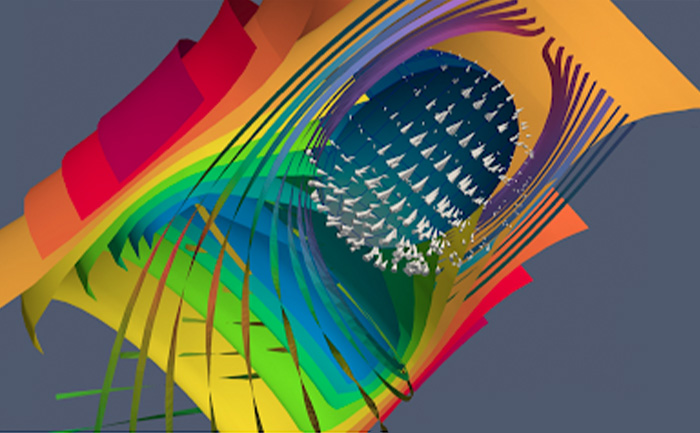
Web-based Computing
We have created an easily customizable web framework, ParaViewWeb, to build applications with interactive scientific visualization inside the web browser. Coupling our visualization expertise with next-generation web technologies, we have structured ParaViewWeb so that it provides a collection of visualization components to illustrate patterns and structure in large datasets. Each component highlights one of the many possible ways of viewing datasets. These visualization components can be integrated into a web-based workbench-like environment that provides new interfaces to support discovery, exploration, filtration, and analysis.
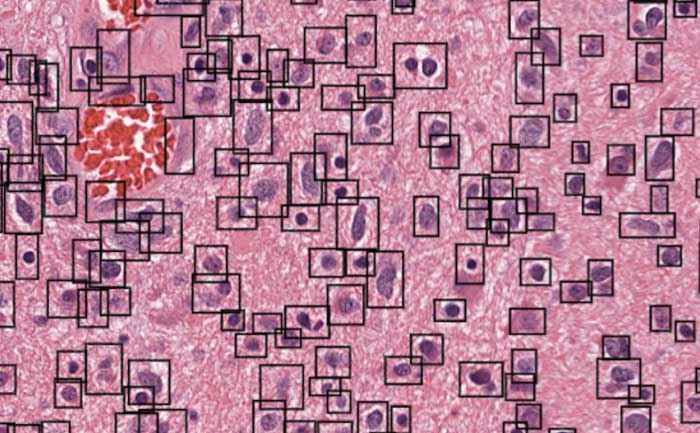
Digital Pathology
We are building a suite of open source web-based informatics tools that manage, visualize, and analyze massive and growing collections of data in digital pathology. The key solutions in the making include Digital Slide Archive (DSA), HistomicsTK, and Large-image. DSA is a web-based platform for the aggregation, management, and dissemination of large collections of whole-slide histopathology images, along with associated clinical and genomic metadata. HistomicsTK serves as both a web-based analytics platform and a standalone Python toolkit. It contains computer vision and machine learning algorithms for the quantitative analysis of whole-slide histopathology images and associated data. Large-image supports the web-based visualization and annotation of large multi-resolution whole-slide histopathology images. It also includes a Python API for reading/writing these images in a tiled fashion.
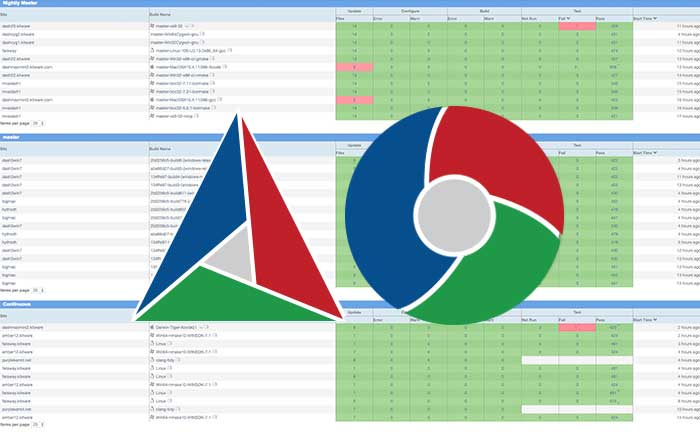
Software Build and Package Management
Kitware specializes in deploying and managing large C++/Python build systems using open source technology, saving you time and money. Our team can help streamline your processes and eliminate pain points for your developer team by improving your infrastructure, optimizing workflows, leveraging automation, and more.
Learn More

Computational Physiological Modeling
Our open source Pulse Physiology Suite features a well-validated and documented computational physiology engine for real time simulations of the body’s response to trauma, disease, and treatment. Pulse Physiology Explorer is an extendable user interface for quick exploration and experimentation with the Pulse Physiology Engine.

Cross-platform Interactive Applications
We work on a variety of cross- and multi-platform applications from desktop, to server, to mobile, to cloud, to web. The focus of these applications includes distributed 2D and 3D ultrasound, augmented reality, manual and semi-automatic segmentation and registration, quality control workflows, and surgical robotics. At their core, these applications are built on our technologies and expertise in image processing, segmentation, registration, and surgical guidance. We work directly with customers to design workflows, user experiences, and custom interfaces from the ground up. Our development, testing, and documentation practices are aligned with FDA requirements and HIPAA technical safeguards for software products.

End-to-end Simulation workflows
We have expertise developing tools that address the simulation workflow from defining the proper geometric shape or mesh, to integrating simulation parameters, to queuing the simulation job, to visualizing and analyzing the simulation results. This approach to simulation workflow management breaks down the monolithic approach to HPC and simulation. Our approach is much more modular, and it can be easily tailored to specific simulations from hydrological to nuclear reactor simulations.

Geospatial Information Systems and Visualization
We offer advanced capabilities for geospatial analysis and visualization. We support a range of use cases from analyzing geolocated Twitter traffic, to processing and viewing complex climate models, to working with large satellite imagery datasets. We build AI systems for cloud-native geospatial data analytics at scale and then construct customized web-based interfaces to intuitively visualize and interact with these results. Our open source tools and expert staff provide full application solutions, linking raw datasets and geospatial analyses to custom web visualizations.

High Performance I/O and Scientific Workflows
We have expertise in developing and deploying high performance input/output (I/O) capabilities. I/O is one of the most pressing challenges with large-scale simulations and can be a major bottleneck when not done properly. I/O bottlenecks can often result in scientists discarding or not analyzing large amounts of their data. Kitware is one of the major partners of the Adaptable I/O Systems (ADIOS) framework used to address this challenge. The ADIOS framework delivers a highly optimized I/O and coupling infrastructure that enables efficient data exchanges to move data to the storage system and between multiple codes running concurrently through in situ and in transit processing. At its core, ADIOS is an I/O library built on a self-describing data mode and utilizes a publish subscribe mechanism. It is used to efficiently read and write large amounts of data to and from storage systems as well as to and from other codes. Together with our visualization infrastructure, VTK and ParaView, it enables efficient data analysis, visualization, code coupling and checkpoint/restart generation.

Image Guided Intervention and Surgical Planning
We develop image-guided intervention and surgical planning applications that replace traditional surgery and invasive procedures with minimally invasive techniques that incorporate medical imaging to guide the intervention. Patients prefer these procedures to open surgeries because they are typically less traumatic to the body and result in faster recovery times. Technological advancements in medical imaging, registration algorithms, visualization technologies, and tracking systems are driving forces behind increased adoption of these procedures by physicians. Software is an integral part of these image-guided intervention systems. Whether it is for interfacing with a tracking device to collect position information from surgical instruments, integrating intraoperative and pre operative images, or generating a 3D visualization to provide visual feedback to the clinician, software has a critical role. The software platforms we are developing at Kitware are playing a major role in increasing the pace of research and discovery in image-guided intervention systems by promoting collaborations between clinicians, biomedical engineers, and software developers across the globe.

In-Situ Computing
Input/output (I/O) is one of the most pressing challenges with large-scale simulations. It is already common for simulations to discard most of what they compute in order to minimize time spent on I/O. As scientific computing moves to the exascale, the disparity between computational capability and I/O capability continues to expand. Since storing data is no longer viable for many simulation applications, data analysis and visualization must now be performed in situ. ParaView Catalyst is a light-weight version of the ParaView server library that is designed to be directly embedded into parallel simulation codes to perform in situ analysis and visualization at runtime. ParaView Catalyst was used with SENSEI in the largest-to-date in situ simulation run. The run was the first known to exceed the milestone of one million Message Passing Interface (MPI) processes.

Virtual Simulation in Healthcare
Our experience with developing medical skill and procedural trainers includes developing the underlying real-time technologies such as fast numerical solvers, haptic rendering algorithms, advanced rendering for 2D and virtual reality displays, collision processing and custom hardware interfacing. These technologies are embedded in our Interactive Medical Simulation Toolkit (iMSTK) which is a C++ based open-source toolkit that aids rapid prototyping of interactive multi-modal surgical simulations. iMSTK features a highly modular and easy to use framework with a comprehensive ecosystem of tools and algorithms required to develop end-to-end medical planners and trainers. Besides access to the technologies that are exclusive to iMSTK, applications can benefit greatly from its interfacing with Kitware’s other open-source software tools such as VTK, 3D Slicer and Pulse. Such synergistic use of disparate software has broadened the range of medical applications that are possible and has already helped Kitware successfully build virtual trainers for laparoscopic camera navigation, kidney biopsy and osteotomy procedures.

Visualization and Analysis
Data analysis is often the most critical bottleneck in the scientific discovery process. The exponential growth of datasets in size, scale, complexity, and richness makes it difficult for researchers and scientists to analyze data and obtain insight. As data approaches exascale, this problem becomes even more pressing. Moreover, data is becoming increasingly complex, not only because of enhanced resolution but because of the integration of experimental observations and associated metadata within datasets. We address these large data analysis issues by providing expertise in high-performance computing, distributed visualization, and data processing. We develop the computational infrastructure and tools to power large data analysis and visualization, in particular VTK and ParaView. These tools enable scientists to tackle today’s most pressing research challenges.

Web Visualization
We extend our heritage as leaders in scientific visualization with the Visualization Toolkit (VTK) through new visualization solutions for use in general data exploration and understanding. Our web visualizations bring together the best in modern visual analysis, lighting up data in new ways.

Web-based Computing
We have created an easily customizable web framework, ParaViewWeb, to build applications with interactive scientific visualization inside the web browser. Coupling our visualization expertise with next-generation web technologies, we have structured ParaViewWeb so that it provides a collection of visualization components to illustrate patterns and structure in large datasets. Each component highlights one of the many possible ways of viewing datasets. These visualization components can be integrated into a web-based workbench-like environment that provides new interfaces to support discovery, exploration, filtration, and analysis.

Digital Pathology
We are building a suite of open source web-based informatics tools that manage, visualize, and analyze massive and growing collections of data in digital pathology. The key solutions in the making include Digital Slide Archive (DSA), HistomicsTK, and Large-image. DSA is a web-based platform for the aggregation, management, and dissemination of large collections of whole-slide histopathology images, along with associated clinical and genomic metadata. HistomicsTK serves as both a web-based analytics platform and a standalone Python toolkit. It contains computer vision and machine learning algorithms for the quantitative analysis of whole-slide histopathology images and associated data. Large-image supports the web-based visualization and annotation of large multi-resolution whole-slide histopathology images. It also includes a Python API for reading/writing these images in a tiled fashion.

Software Build and Package Management
Kitware specializes in deploying and managing large C++/Python build systems using open source technology, saving you time and money. Our team can help streamline your processes and eliminate pain points for your developer team by improving your infrastructure, optimizing workflows, leveraging automation, and more.
Learn More
Did we miss you at the booth?
Here are some helpful resources.
-
PDF
Supercomputing Brochure
Learn about Kitware’s innovative supercomputing solutions
-
PDF
ParaView Handout
The world’s leading open source post-processing visualization engine
-
PDF
CMake Handout
Build, test, and package software
-
PDF
Trame Handout
Kitware’s open source web framework for visual analytics
-
PDF
CMB Handout
Master the simulation fife cycle without becoming a computational expert
Working with Kitware
Kitware can work closely with you and your team to customize our platforms. We aim to deliver innovative solutions that not only meet your requirements, but connect with your existing tools and integrate into your workflows. Contact us to learn more about working with Kitware.